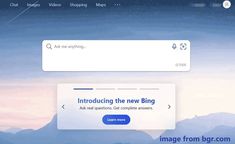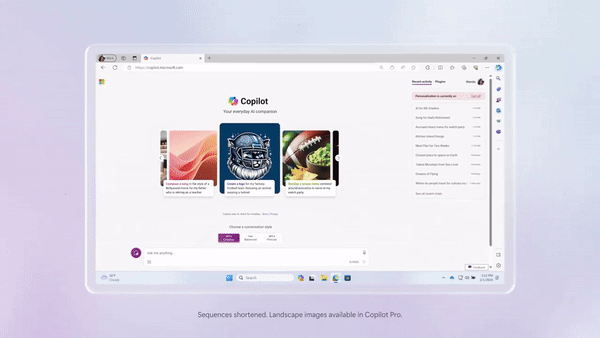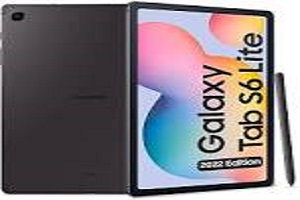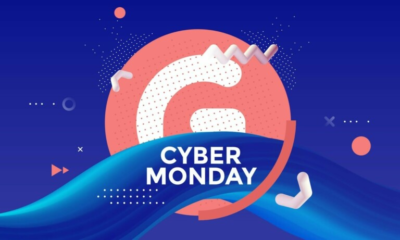A year ago today, Microsoft unveiled its ambitious plans for an AI-powered Bing search engine. It was the biggest launch in the history of Bing, helped push AI usage even further into the mainstream, and spurred a wave of dreams and panic about what AI could impact next. The launch was even successful enough to rattle Google, which was quickly seen as falling behind on artificial intelligence.
Emerging Tech
Microsoft’s next big AI push is here after a year of Bing

Copilot is now the main brand for Microsoft’s AI efforts as the company moves away from Bing and heads to the Super Bowl.
“They will definitely want to come out and show that they can dance,” Microsoft CEO Satya Nadella told The Verge at the time. “And I want people to know that we made them dance.”
The strategy worked. But one year later, Bing seems to have fallen out of the conversation. Google is still at over 91 percent of traditional search market share, according to StatCounter, and ChatGPT has rocketed to 100 million weekly users, all while Bing grew by less than half of a percent in the search market globally.
:format(webp)/cdn.vox-cdn.com/uploads/chorus_asset/file/24805700/bing_chat_chrome.png)
Microsoft doesn’t necessarily see this as a failure. “We’ve seen [Bing] share grow,” says Yusuf Mehdi, executive vice president and consumer chief marketing officer at Microsoft, in an interview with The Verge. The launch may not have “completely reshaped the search landscape,” Mehdi says, but it’s been enough to matter for Microsoft. “Even a few points of share growth is significant for Microsoft and for customers to bring more competition.”
But while Bing may not have exploded, Microsoft’s AI ambitions did. Over the past year, the company has launched AI features inside just about everything: there’s AI in Office apps, AI features inside Windows apps like Paint, and even a dedicated AI key for laptops. Anywhere you look, Microsoft has some sort of AI feature — and this isn’t about to slow down.
But instead of Bing in the driver’s seat, Microsoft has pivoted to Copilot, an “AI companion” that the company is gradually placing inside all of its key software and services. Microsoft has now created a Super Bowl ad for Copilot that will air on Sunday. After a rebranding away from Bing a few months ago, Copilot is now being positioned as the future of Microsoft’s AI efforts, which are leaning more into productivity and creation than just search.
This new Super Bowl commercial for Copilot is a surprise from Microsoft in many ways after using the multimillion-dollar ad slots in the past to remind the world why its software matters and telling emotional stories of gamers with disabilities. This time, there are no Windows PCs, spreadsheets, or Xbox consoles — just a single iPhone and a push to get people to download the Copilot app on iOS and Android. If you’ve never heard of Copilot, you wouldn’t even know it’s a Microsoft commercial until the very end.“That’s a pretty big thing from a company that historically, at least with individuals, has been heavy with the PC,” says Mehdi.
The Super Bowl ad, which focuses on the idea of using AI to be creative, walks a fine line between empowering people to do things they’d traditionally have to learn and be skilled in and concerns over AI replacing jobs — particularly in the creative industry.
Microsoft is also launching new Copilot features alongside this marketing effort that improve the overall user experience and the image creation capabilities of its AI assistant. On the image creation side, you can now highlight objects in an AI-generated photo, blur the background of an image, or add an effect like pixel art to an image. The company has also done a lot to make the app look sharper.
“You’ll see a new look and feel. We’ve done a lot of user experience things that are very subtle, like the color treatments, the spacing, and the speed of it will be much faster,” says Mehdi. The focus on image creation came after seeing how Bing users were taking up Copilot. “Image creation is one of the things that’s really resonating. I think it’s the first step in unlocking the ability for people to feel like they can be a creator again,” says Mehdi.

Image creation has become so popular inside Copilot because Microsoft has been offering it to anyone free of charge. That’s great for ease of use, but it does open up these tools to abuse. Microsoft had to close a loophole in its AI image generator that could create explicit images of celebrities. AI-generated images of Taylor Swift became a trending topic on X last month, with reports that people were creating and trading similar images using the Microsoft Designer AI image creator. Microsoft CEO Nadella called the AI fakes “alarming and terrible,” and Microsoft said last week that it was “continuing to investigate these images and have strengthened our existing safety systems to further prevent our services from being misused to help generate images like them.”
It’s clear the shift away from search as the primary AI entry point for Microsoft is also impacting how Copilot shows up in various products and services. It has been a confusing year for the Copilot brand, which started off inside GitHub and then appeared in some sales products before receiving a bigger push as the Microsoft 365 Copilot inside Office apps. That eventually got rebranded to Copilot for Microsoft 365, but it felt like every department at Microsoft was busy launching separate Copilots without a single and clear effort.
That seems to be changing now. “We want to get to where there’s a single Copilot for every individual,” reveals Mehdi. “That Copilot can then add capabilities as you subscribe to them.” So in the future, if you subscribe to Copilot Pro or Copilot for Microsoft 365, that’s just an add-on to the main Copilot.
“Over time I think you’ll see us continue to add more and more of those things. So the notion of a personal Copilot that is yours, we want to get to one idea, and we want that to unlock everything you’ve got with your IDs, with your personal IDs and work IDs,” says Mehdi. “Where we go from there we’ll see. There are a lot of extensions that are coming to Copilot, whether those are GPTs or plug-ins, or the ability to do custom Copilots themselves.”
:format(webp)/cdn.vox-cdn.com/uploads/chorus_asset/file/25201105/RDxvhUA.jpeg)
Microsoft is also working on a big Windows refresh that’s focused on AI. Mehdi didn’t want to talk about the specifics of how Microsoft will overhaul Windows for AI, but he did drop some breadcrumbs of what to expect. “The unique thing of Copilot inside Windows is that it can be aware of the context you’re in,” Mehdi says, “It can understand the pages, so it can do more rich things.”
“I think it’s something like 20 percent of [Windows] users use 10 percent of the features. Once you can say, ‘Hey turn my PC into dark mode, configure that printer for me, help me get the following going,’ we can turn everyone into a power user of Windows,” says Mehdi. “It sounds cliche, but what I think that will unlock in terms of people’s ability to use computers to do amazing things will be quite profound.”
A year on, Bing’s AI isn’t top of mind — but it’s clear that it kick-started a major shift for Microsoft. And while the impact on Bing wasn’t enormous, the impact across the product line has been.
“When we launched, we said we had to start at some place,” Mehdi says. “I think we made the right call to start with Bing.”







